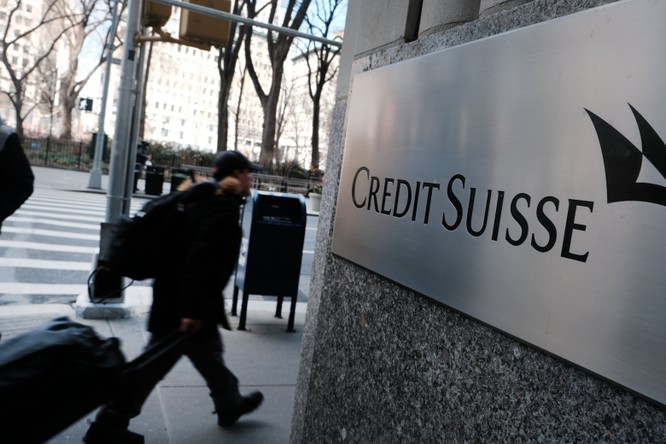How will banking risks affect the US dollar?
The FX markets still seem somewhat undecided about the ramifications of the banking strains that have gripped Europe and the US. But, whatever happens, it does not look as if the 2008 global financial crisis playbook is likely to apply.

With Credit Suisse being rescued by UBS and Silicon Valley Bank in the US enduring an even worse fate, it is clear that the banking risks that we last saw during the global financial crisis are back.
>> Is a global financial crisis imminent?
With Credit Suisse being rescued by UBS and Silicon Valley Bank in the US enduring an even worse fate, it is clear that the banking risks that we last saw during the global financial crisis are back. Just whether they will prove so destructive remains to be seen. But what is noticeable about the FX market is that the reaction is very different.
The global financial crisis saw the dollar rally by more than 20% during the second half of 2008 against other major currencies. During the current crisis, the dollar has barely moved. Of course, dramatic strength could come in time if more banks fall over, but the Standard Bank suspects that any dollar strength will be limit ed. Before the banking strains developed, it had argued that the dollar could rise only as far as parity against the euro, and it still takes the same view in spite of the banking crisis that’s been unfolding.
In the Standard Bank’s view, the key difference between now and 2008 is that global central banks are better able to prevent dollar shortages from developing when banking strains arise. The cost of borrowing dollars through the FX market is as opposed to borrowing in the money market—or currency basis swaps). This measure, which focuses on the euro/dollar basis, shows how 2008 and some subsequent crisis periods, such as the 2010–12 euro zone debt crisis, led to significant increases in the cost of securing dollars through the FX market. This dollar shortage also reflected itself in sharp increases in the value of the dollar on the spot market.
In addition to this, it seems very likely that safe-asset demand for dollars rose as well as investors piled into safe US assets, particularly T-bills and treasuries. In response to these tensions, the central banks enhanced and expanded their dollar swap facilities significantly to provide dollars to the market in times of stress. These really came into their own during the euro zone debt crisis and the pandemic.
Over the weekend, central banks announced that the regular weekly dollar swaps between the Fed and other major central banks will be undertaken on a daily basis through at least the end of April. From the basis swap market, it appears that dollar funding pressure has been very limit ed so far, and that’s the story from Fed dollar swaps as well as the last dollar-supplying operation, which saw just USD 470 million in demand from foreign central banks—primarily the ECB.
Hence, it seems that the Fed and other central banks have taken very preemptive action here, and we would not be at all surprised if demand at these dollar-supplying operations remains pretty modest. A corollary of this is that the spot rate of the dollar is unlikely to soar the way that it did in 2008 or even during some subsequent non-bank crises, such as the pandemic.
>> Another financial crisis for the US
Another issue that’s worth bearing in mind is that the safe-asset status of Treasury bonds seems somewhat questionable. This is because the key attribute of a safe asset is that the market is deep and liquid. But there have been a number of instances in the Treasury market in recent years when these qualities seemed somewhat lacking. Of course, treasuries have still been bought aggressively during this banking crisis, although it is notable that US yields have not fallen significantly more than those in other bond markets.
All in all, we are still left with the feeling that this banking crisis, even if it escalates, will be worth only modest dollar strength and not the dramatic premium that we’ve seen during past banking crises. The currency that could actually come out on top is the yen, or perhaps the renminbi. The yen seems solid partly because banking risks will be perceived as relatively modest given the prior resilience of the sector.
Also, from a monetary policy perspective, the crisis could pull the more aggressive tightening of other central banks back towards the more passive Bank of Japan. This is also the issue of whether the demise of Credit Suisse will undermine the safe-asset strengths of the Swiss banking industry—and the Swiss franc. "Should this happen, we suspect that the yen could be the currency to gain, and we may have started to see this already given that Swiss/yen has fallen hard but dollar/Swiss is little changed. As for the dollar and yen, we see this on a longer-term path to sub-120 levels over the next year or two", said the Standard Bank.








